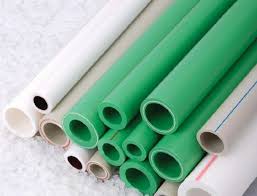Is PPR environmentally friendly?
Yes, PPR is considered environmentally friendly because it is recyclable. It can be melted down and reformed into new products, reducing the need for virgin plastic production and minimizing waste.

Are PPR pipes suitable for use in hot water systems?
Yes, PPR pipes are suitable for use in both hot and cold water systems. They have excellent heat resistance properties and can withstand high temperatures without deformation or degradation.
What is the difference between PPR and CPVC pipes?
PPR pipes are made of a type of polypropylene, which is a thermoplastic polymer known for its high temperature resistance and durability.
CPVC pipes, on the other hand, are made of chlorinated polyvinyl chloride, which is a thermoplastic material infused with chlorine to enhance its heat resistance.
While both PPR and CPVC pipes are suitable for plumbing applications, PPR pipes offer higher temperature resistance and are more versatile in terms of the range of applications they can be used for. CPVC pipes can be used only between 0*C to max 90*C while PPR can be used from -10*C to 95*C, giving a better temperature resistance for both hot and cold water.
Can PPR pipes be used for underground installations?
Yes, PPR pipes can be used for underground installations, provided they are adequately protected from mechanical damage. Proper insulation and backfilling techniques should be employed to ensure the longevity of the piping system.
What is the expected lifespan of PPR pipes?
PPR pipes have a long service life, typically ranging from 50 to 100 years depending on the operating conditions and installation quality. Proper maintenance and periodic inspections can help extend the lifespan of the piping system.


